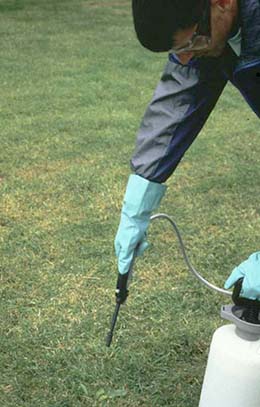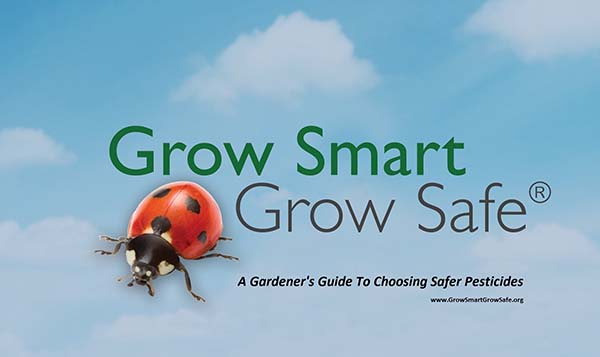King County facility Integrated Pest Management (IPM)
King County pesticide use
= external link

Integrated Pest Management (IPM) King County land and facility managers follow an IPM approach to determine if and how they use pesticides. Each department uses IPM decision-making about which herbicide, insecticide or fungicide to apply. Use of pesticide products by county operations is almost exclusively herbicide use for managing vegetation, including noxious weeds.
Washington State noxious weed law (RCW v 17.10) requires the control or eradication of specified noxious weeds. Personnel that apply pesticides must also have a pesticide applicator license for from the Washington State Department of Agriculture that is renewed annually.
Indoor pesticides King County IPM program does not cover structural / indoor uses of pesticides, for example to control termites, roaches, ants, etc. within a building. The county uses very few outdoor insecticides or other pesticides; and is limited to occasional spot applications, such as hornet nests close to high-public-use areas.
How we use IPM Integrated Pest Management (defined in RCW 17.15 ) is a process to identify the most environmentally sound and economical pest control methods and strategy. King County’s IPM program evaluates pest control strategies and encourages non-chemical controls when effective and practical. The IPM process categorizes pesticides as either Tier 3 – lowest hazard, Tier 2 moderate hazard or Tier 1 highest hazard.
Our IPM review process:
- King County staff identify the weed and determine whether it requires treatment.
- If the pest is a state regulated noxious weed and its control or eradication requires the use of specific chemical pesticides, the staff may submit a Tier 1 Product Exception Request to the IPM program administrator.
- The IPM program administrator reviews the request and considers alternative control use strategies – biological, cultural, mechanical, and chemical control methodologies – while considering human health, ecological impact, feasibility and effectiveness. After the review, the administrator approves or denies the request.
- The IPM program administrator encourages personnel to consider using the least hazardous chemical pesticides or alternative control methods.
- In cases of staff requesting the use of new pesticide products not listed on the current Tier Tables, the administrator evaluates the hazards of the new product, assigns a Tier ranking, and adds the product to the Tier Table.
- Pesticide quantity and use records are required to be maintained by all applicators.
Criteria to evaluate IPM pesticide use requests:
- What is the pest?
- What were the other control alternatives considered and why are they not suitable?
- If a Tier One product is being requested, why is it the best control option?
- A review of the safety data of the active ingredient, use recommendations, environmental risk information and risks to pollinators. This review is often done in consultation with Thurston County, which uses the Seattle/King County tier tables and adds new ingredients to the lists.
The policy and background
County departments operate under Executive Order PUT 8-17 (AEO) on Integrated Pest Management, which originated with the county’s response to the listing of Chinook salmon under the Endangered Species Act. Any department that uses pesticides in outdoor operations must follow an Integrated Pest Management approach. Under this approach, non-toxic products are preferred and products that are considered highly toxic (the Tier 1 products) are not allowed – without a specific exception.
Resources
King County IPM Guidelines
Grow Smart, Grow Safe – a gardener’s guide to less toxic products
King County noxious weeds
Thurston County’s Pest Specific Prescriptions
Noxious weed Integrated Pest Management


 Translate
Translate